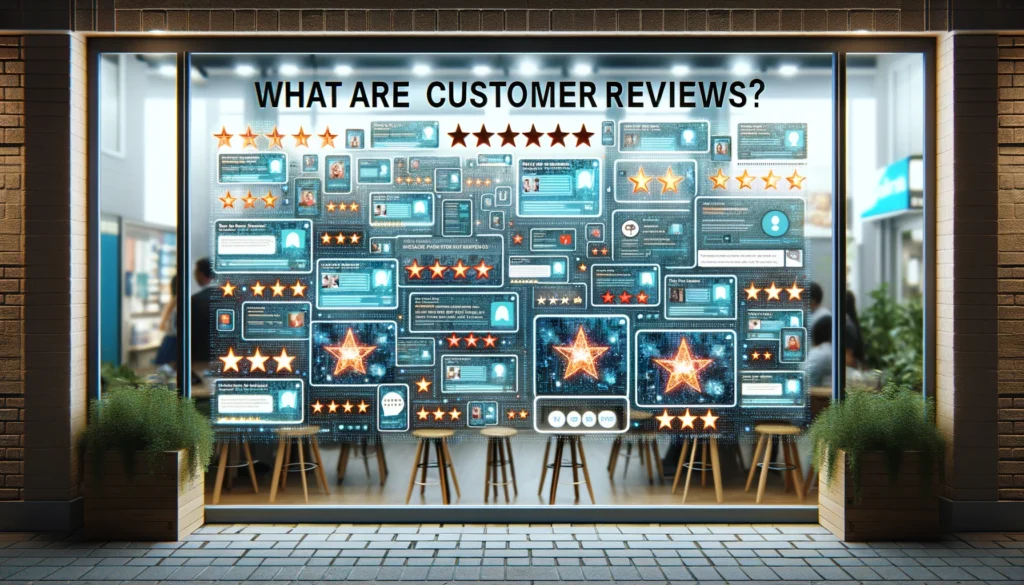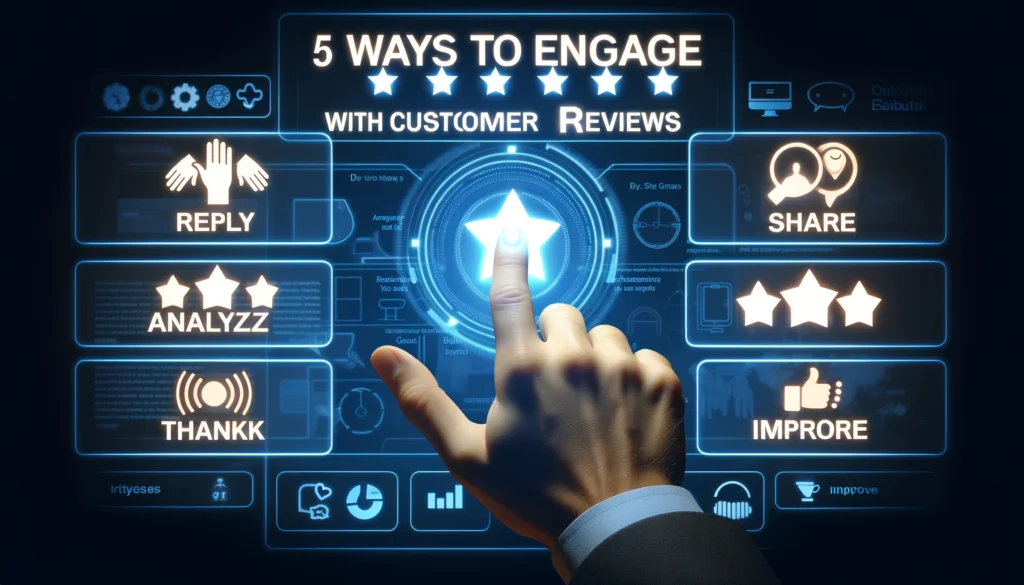Positive Reviews Can Increase Customer Spending By 31%.
Reputation management has become a critical component of every company’s sales strategy. Customer reviews play an important role in consumers’ decision-making. Therefore, word of mouth is essential. A 2021 Northwestern University Spiegel Research Centre study found that approximately 95% of customers look up internet reviews before purchasing.
In theory, your reviews should be positive if you provide outstanding service and meet your client’s expectations. In actuality, this is seldom the case. However, you can take steps to lessen negative comments and highlight favorable input. Here are some techniques for managing your company’s reputation.

What Are Customer Reviews?
Customers’ reviews are comments about a company’s products and services for others to read. Many consumers read these reviews to learn more about the companies and their products or services before purchasing.
Many internet evaluations include a ranking system, such as review star ratings, enabling clients to determine which business to hire for their needs swiftly. If potential consumers see many favorable reviews with high rankings for your company or its items, they may be more confident purchasing from you.
5 Ways To Engage With Customer Reviews
1. Create a community.
One of your key business goals should be to build client trust in your brand. You want them to like the experience and lifestyle you provide and feel respected as a customer. As a result, boosting your level of client involvement might pay off significantly in terms of trust building. It will inspire clients to communicate with you by commenting about your brand on social media review sites or offering favorable feedback.
Consider how to interact with your audience. You can interact with current and prospective consumers by sponsoring charitable activities or speaking at local events. To enhance online interaction, start a company blog that gives information beyond what your product or service can do.
2. Address negative feedback.
Customers want you to care about every interaction with them, especially those that take place online. According to the Brightline 2022 Local Consumer Review Survey, 89% of consumers are “highly” or “fairly” likely to use a business that responds to all of its online reviews, while 57% are “not very” or “not at all” likely to use a firm that does not reply to any reviews.
Response timeframes are also important, with a ReviewTrackers survey revealing that 53% of customers expect businesses to respond to negative reviews within a week. While it may be tempting for some businesses to erase negative reviews, doing so means passing up an opportunity to use that input.
When a customer sees that you care about their satisfaction and respond to all favorable and negative comments, it can boost brand loyalty and customer conversion. Responding to reviews can be time-consuming, so consider reducing the process by creating numerous customizable templates.
This can help you avoid having to recreate the wheel with each response. As long as you try to engage with negative comments, you’ll demonstrate to current and prospective consumers that you genuinely care about their experience and desire the opportunity to do right by them.

3. Get honest feedback.
Receiving favorable online comments from verified buyers might leave a stronger impression than those not verified. According to a 2022 Atlantic Marketing Journal study, having many reviews from verified customers can lead to increased sales.
Try to make it easy for customers to submit internet reviews. For example, send them an automatic SMS or email with a link to leave a comment. Offering incentives, such as a discount on their next engagement with your company, may be worthwhile in review generation.
4. Refrain from astroturfing.
Although you want to encourage your clients to leave reviews after a positive encounter, there’s a narrow line between asking for genuine feedback and pushing the envelope. Do not rely on the “astroturfing” technique of making artificially positive online remarks.
Fake reviews can be posted, bloggers can be asked to advocate products, and advertorials can be placed to influence public sentiment. Inauthentic behavior is likely to backfire, and developing customer trust through pleasant brand interactions is a better use of your resources than writing bogus evaluations.
5. Surprise and delight customers.
Surprise and thrill your consumers with unexpected gifts. This method promotes a stronger connection with your brand. Here are some of the regularly utilized strategies for surprising clients and providing wonderful experiences:
- Random acts of kindness: Offer free additional product usage.
- Invitations to unique experiences: For example, consider an event.
- Personalized presents and freebies: Base these on a customer’s purchasing history.
- Extra mile support: Go above and beyond what is required.
Delighting clients can also lead to more word-of-mouth recommendations as they discuss your product with their network.

How Can You Get The Most Out Of Customer Reviews?
Consider how you may use favorable reviews and ratings to help your business. Here are some tips for leveraging customer reviews efficiently in your marketing efforts:
Showcase the greatest ones on your website: Choose some of your company’s greatest reviews and display them on the homepage of your website for visitors to see. This placement may inspire customers to make a purchase or read additional reviews.
Include reviews on specific product pages: If you sell things through an online store or offer services on a website, consider including reviews for those offers on their respective sites. For example, you could include ratings and reviews about a pair of shoes for sale on your website so that customers may read other people’s opinions about them.
Consider including photos: Pictures of your items or services may persuade more customers to trust the reviews on your website and purchase from your company. Consider adding the option to include photographs in reviews so that readers can see your products or services and compare them to similar items.
Instruct customers to edit negative reviews: If you contact a client about a negative review and resolve the issue with their purchase, you may request that they edit their negative review. While it is the customer’s choice to update their review with fresh information, asking them may result in more good reviews for your company.
Influence Of Reviews And Testimonials: Statistics Data
Numerous studies have found that reviews and testimonials have a major impact on consumer behavior. According to a BrightLocal review poll, 88% of consumers believe internet evaluations are as reliable as personal recommendations. Furthermore, 92% of customers consult online reviews before purchasing.
According to research, positive reviews can contribute to greater conversion rates. Spiegel Research Centre discovered that displaying reviews can raise conversion rates by up to 270%. Furthermore, a Harvard Business School study found that a one-star rise in a company’s Yelp rating can result in a 5-9% boost in sales.
Leveraging Various Platforms For Soliciting Reviews
- Website: Add review widgets or plugins to your website so that customers may provide feedback directly on your site. This gives customers a convenient and trustworthy place to share their experiences.
- Social Media: Use social media networks to get reviews and testimonials. Encourage customers to offer evaluations in the comments section of your posts or by direct contact. You may also run interesting social media campaigns to encourage and write about user-generated content and testimonials.
- Review sites: Add your business to prominent reviews like Google My Business, Yelp reviews, TripAdvisor, and industry-specific review platforms. Monitor these sites frequently and respond to all favorable and negative evaluations to demonstrate that you respect client feedback.

Online Reputation Management Tool
Managing an online reputation is critical for firms in today’s digital landscape. It entails tracking and responding to reviews and criticism, effectively dealing with negative feedback, and establishing a proactive online reputation management strategy.
Monitor and Respond To Reviews
To maintain their online reputation, businesses should actively monitor reviews and feedback across multiple platforms, including review sites, social media reviews, and search engine results. This can be done manually or with internet reputation management solutions, like Checkthereviews. Responding quickly to reviews, both favorable and negative, is critical.
Responding to favorable reviews demonstrates respect for satisfied customers and promotes client loyalty. Responding to unfavorable reviews displays a willingness to address concerns and resolve problems.
Convert Negative Feedback Into Opportunities.
Negative feedback can be difficult, but it can allow firms to demonstrate their dedication to customer pleasure. Staying calm, compassionate, and professional is critical when reacting to unfavorable feedback. Acknowledge the customer’s problems, apologize if necessary, and propose a solution or resolution.
Businesses can convert unsatisfied consumers into devoted advocates by publicizing customer feedback and responding to unfavorable reviews as soon as possible and efficiently.
Conclusion
To maximize the value of reviews and testimonials, organizations should follow best practices for maintaining their online reputation. This involves regularly monitoring and reacting to reviews and feedback, dealing with bad reviews in a timely and professional manner, and actively engaging with customers on social media and other platforms.
Encourage satisfied customers to post reviews and testimonials, check the legitimacy of reviews, and establish a strong internet presence. Businesses that apply these best practices can leverage the power of reviews and testimonials to develop trust, attract new consumers, and achieve long-term success.







